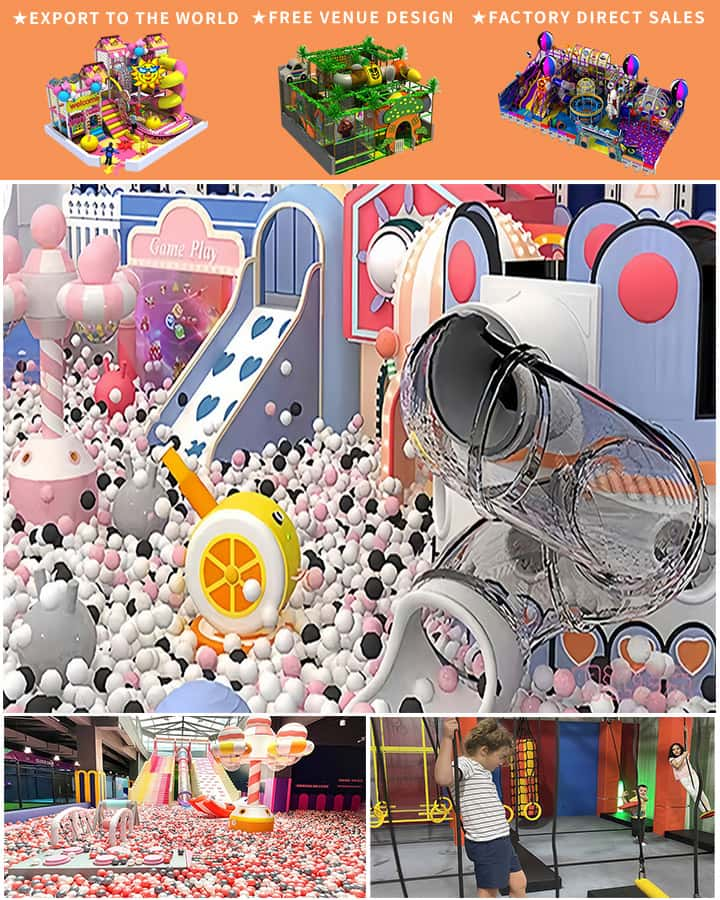In recent years, the charm of indoor playgrounds has been steadily capturing the hearts and minds of children and parents alike. Among these, Cocomelon-themed indoor playground designs have gained immense popularity, creating magical, educational spaces that resonate with toddlers and young children. This surge in demand is not just a trend but a response to the growing need for safe, engaging, and stimulating environments where children can play, learn, and grow.
The Essence of Cocomelon
Cocomelon is an animated series that has become a household name, captivating children with its colorful characters, catchy songs, and simple yet enriching stories. The show follows the adventures of a group of nursery rhyme characters living in a quaint village, fostering values such as friendship, sharing, and kindness. Translating this beloved universe into physical indoor playgrounds allows children to step inside their favorite animated worlds, transforming imagination into reality.
Design Elements Inspired by Cocomelon
Designing an indoor playground inspired by Cocomelon involves a delicate balance of creativity and functionality. Here are some key elements that come together to create an engaging and immersive experience:
1. Themed Play Areas
Each section of the playground can be themed around different aspects of the Cocomelon universe. For instance, a “Nursery Rhyme Corner” could include interactive storybook panels, soft plush toys, and gentle slides shaped like pages from a book. Another area, the “Musical Meadow,” might feature instruments that children can play, encouraging musical exploration and rhythmic play.
2. Interactive Installations

Interactivity is at the heart of a successful indoor playground design. Incorporating touchscreens that play Cocomelon videos, interactive floors that respond to children’s movements, or even augmented reality (AR) zones can make the experience dynamic and educational. These installations keep children entertained while subtly teaching them about colors, shapes, numbers, and letters.
3. Soft Play Equipment
Safety is paramount in any playground design, especially for toddlers. Using soft, cushioned materials for equipment like climbing frames, tunnels, and ball pits ensures that playtime is both fun and secure. These structures can be designed to resemble scenes from Cocomelon, such as cozy cottages or whimsical gardens, enhancing the thematic cohesion.
4. Educational Wall Panels
Integrating educational content within the decor can turn every corner of the playground into a learning opportunity. Wall panels adorned with colorful murals depicting scenes from Cocomelon can include hidden elements for children to discover, promoting observation skills and storytelling. Interactive panels with puzzles and games related to the series further reinforce cognitive development.
Bringing the Design to Villages
Adapting the Cocomelon indoor playground design for village settings requires thoughtful consideration of local context and community needs. Here’s how it can be tailored to suit rural environments:
1. Local Materials and Craftsmanship
Utilizing locally sourced materials and involving local craftsmen in construction not only supports the community economy but also adds a unique, authentic touch to the playground. Bamboo structures, hand-painted murals, and locally crafted toys can create a sense of pride and ownership among villagers.
2. Cultural Integration
Incorporating elements of local culture and traditions into the playground design can make the space more relatable and inclusive. For example, adding traditional games or motifs from village folklore alongside Cocomelon themes creates a harmonious blend of global and local influences, enriching the cultural tapestry of the playground.
3. Outreach and Education
An indoor playground in a village can serve as an educational hub, offering workshops and activities that promote early childhood development. Collaborating with local educators and healthcare providers to offer programs on nutrition, hygiene, and early learning can extend the benefits of the playground beyond mere play.
Conclusion
Designing a Cocomelon indoor playground for villages is more than just creating a recreational space; it’s about building a vibrant community center that nurtures young minds and spirits. By blending imaginative design with educational content and local cultural elements, such playgrounds can become cherished landmarks in rural areas, fostering joy, learning, and communal bonds. As we innovate and adapt, let us remember that the heart of these playgrounds beats with the timeless magic of childhood wonder and the enduring legacy of community spirit.




